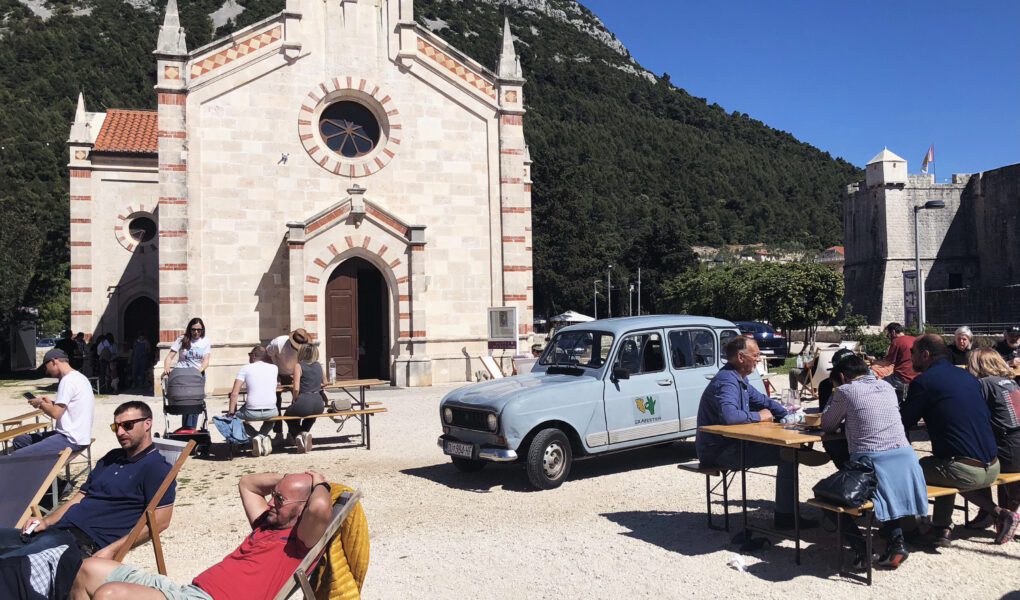Natural wine is misunderstood. Conventional wine makers distrust it. Consumers are confused. (Have we gotten it wrong all this time?) Of those who have tried it, some like the idea more than the flavor. And its fans are subject to the politics that tend to arise in the absence of regulation—or even an agreed definition. But push past all the noise and natural wine is pretty simple. Croatian wine makers know this instinctively. Natural wine is alive in Croatia, and it is not so much a movement as a horizon line. Here’s the story on natural wine in Croatia, and why it’s worth trying.
Clean Farming Is the Key
Ivo Matošin’s 14-year-old Babić vines occupy one flank of a steep valley planted mostly to olive trees, just over the hill from Primošten, in coastal Dalmatia. The morning sunlight on these slopes is delayed by a couple of hours until it tips over the eastern ridge. Most days, a breeze is funneled up the valley, ruffling the pink wildflowers that decorate the stony soil between rows and keeping mildew from the vine leaves.
Matošin explains that at the beginning, he did what most others in the area considered necessary, and applied copper and sulfur in the vineyards. (Copper sulfate, also called Bordeaux mixture, has been used since before the advent of synthetic fungicides, and is allowed in organic and biodynamic winegrowing.) Matošin applied it only once a year but after six or seven years he didn’t see any problems, so he stopped. Now he applies nothing in the vineyard.
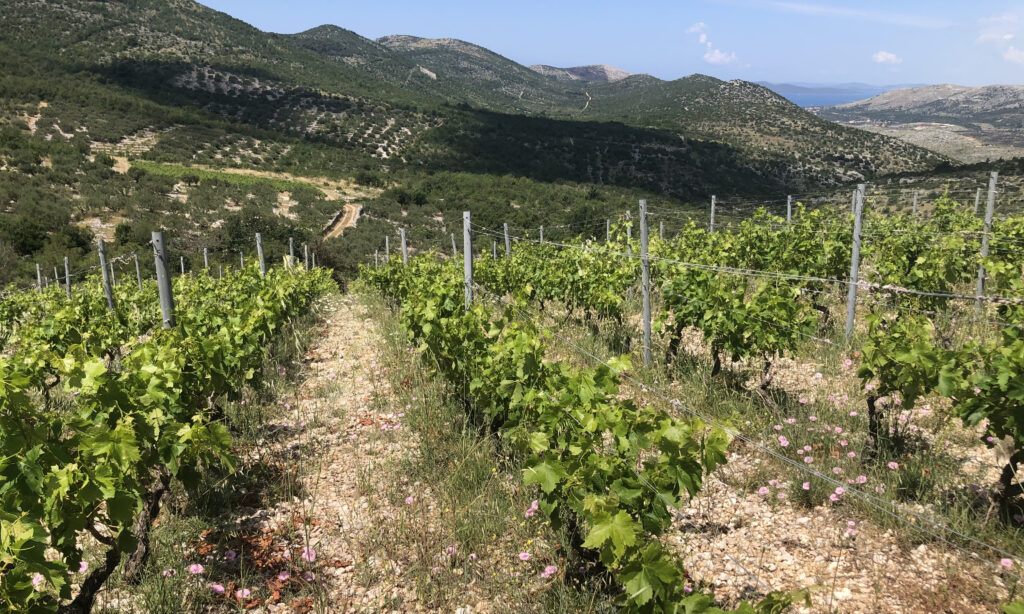
Organic and biodynamic winegrowing are fairly common now around the world, and are the foundation of natural winemaking. Natural wine makers go one step further, using a minimal approach in the cellar as well. They make no additions to the fermenting must and avoid fining and filtration in the resulting wine. Many also avoid the use of sulfites as a preservative, and even temperature control during winemaking.
But virtually any natural wine maker will tell you it is quality fruit that allows them to make wine this way. In conventional winemaking, bad-quality grapes can be improved by additives and a heavy hand in the winery. Not so in natural winemaking. Timing (and luck with the weather) play a part in quality. “You don’t need to correct [during winemaking] if you pick at the right time,” Matošin explains, when acids, tannins and sugars are in balance.
“All this is normal stuff,” he says more than once as we talk about his methods. Matošin is pushing 70 years old; he wasn’t trying to join a movement.
His neighbor, Alen, walks up to the tasting room where we are sitting, looking out over the vines. He’s carrying a freshly bottled, unaged Babić that he wants Matošin to try, from his vineyard across the valley. Alen sells most of his fruit to wineries, but makes this Babić for his family and guests. He, too, has never applied synthetic chemicals in his vineyard, and for fermentation he uses only the native yeasts that come in on the fruit during harvest. This is certainly natural wine, but Alen is unfazed by the distinction. He’s just making wine the way farm wine has always been made—the easiest, most economical way.
3 Useful Terms
Organic A method of farming in which no synthetic fertilizers, pesticides or herbicides are permitted. Various organizations exist to certify organic farmers around the world, which allows them to use the word and/or an organic logo on the label.
Biodynamic A method of farming that is organic at its base, but also views the earth, its organisms and the skies holistically and adds processes intended to support those connections. Demeter is the most widely recognized certifying body for biodynamic growers.
Natural There is no official definition of natural wine, but it is generally agreed to start with organic or biodynamic agriculture and to avoid interventions in the winemaking process. Natural wine is sometimes described as having nothing added and nothing taken away.
Getting Back to “Normal”
It turns out that farm wine—the wine rural families make for themselves each year from a small plot of vines—is what natural wine is trying to get back to. Natural wine is a re-set to a time only about 100 years ago, before the rise of chemical interventions in the vineyard and manipulation in the cellar to make wine friendlier to consumers, more consistent and scalable. Removing the synthetic chemicals, the manufactured yeasts, the powdered acids and tannin, the grape juice concentrate and any number of technological gadgets from the modern winemaking equation brings us back to wine that is, in theory, healthier and more “alive,” a better expression of the grapes and the place where they grow.
Damir Mihelić, the owner of Ghira Winery in Istria, follows natural principles, but he has a bone to pick with the terminology of “normal.” His argument is good-natured but sincere. “I make wine,” he clarifies over the phone. “I don’t put any kind of adjective before the word. The others who want me to add an adjective—organic, bio, natural—they are producing alcoholic beverages,” he says of the conventional wine industry. “We have to describe what we’re doing, we need certification, but they don’t?”
After the Second World War, in the early 1950s, both sides of Mihelić’s family made about 10,000 liters of wine “in a natural way, without electricity, tractors . . .” Conventional winegrowing became popular with the marketing of synthetic agricultural treatments in the 60s. Mihelić came home from enology school in 2008 and made his own choice, “and it’s more what my grandparents did,” he said.
One of the main benefits of clean farming is that it allows the wine maker to use wild yeasts from the vineyard for fermentation, which most wine makers would agree contributes to a greater sense of terroir in the wine. The number and potency of these wild yeasts declines with conventional farming, requiring lab-cultivated yeasts instead for fermentation. Cultivated yeasts can be ordered to target certain flavor profiles. If you wonder why your Pošip tastes like Sauvignon Blanc, this may be the reason. And making wine to taste like another is the antithesis of terroir.
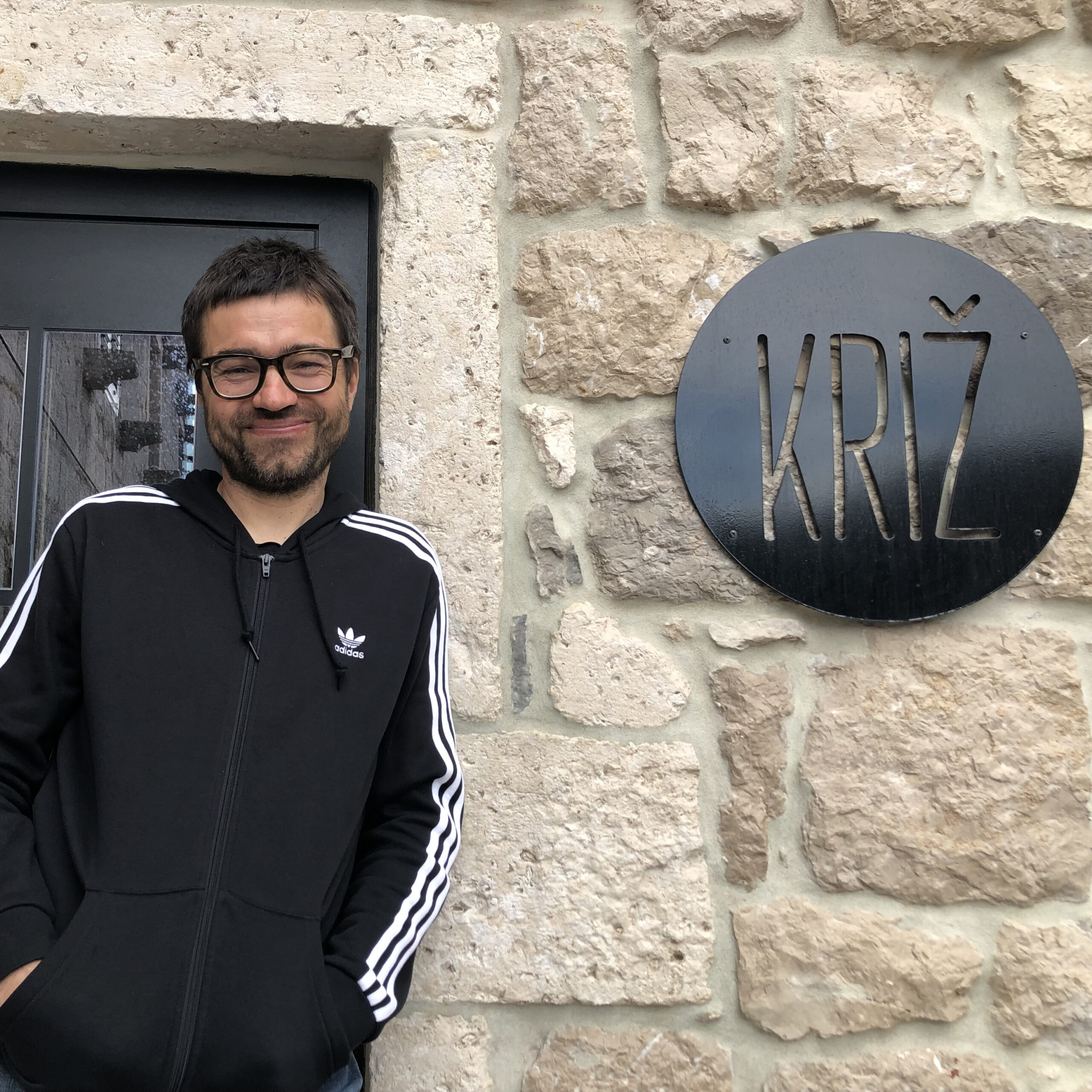
With this in mind, Boris Sarjanović, proprietor of the wine shop Nesputana Vina (“uninhibited wines”) in Zagreb, doesn’t hew to natural wine exclusively. His selection is “organic/bio/natural,” which he refers to often, as a single term. His top requirement is that the wines he drinks and sells be the result of spontaneous fermentation (using only wild yeasts from the vineyards). He talks about maintaining “an unbroken line from the vineyard to the glass.”
Denis Bogoević Marušić of Križ winery, on the Pelješac peninsula in southern Dalmatia, echoed this idea when we talked at his home last spring. “That trip from the vineyard to the winery, for me it’s logical to follow those skills from 100 years ago.” Bogoević Marušić farmed organically from the beginning, alongside his father. “If you really want to try something unique from the Pelješac,” he says, you have to use the native yeasts. “If you’re not using the yeast [from the vineyards] you can feel it.”
A Method, a Movement, a Festival
Bogoević Marušić and his partner, Maja, were part of a committee of wine and food organizers who launched the first GrapeSton festival of “natural winegrowers and spontaneous wines,” held over two days in April in the village of Ston, at the base of the Pelješac peninsula. Twenty-five natural wine growers from all over Croatia (see the list, with short bios), plus others from Slovenia and Serbia, joined an international team of slow-food chefs and producers to present the best of natural wine and food. Wine makers were on hand to pour tastes in the cool of the rector’s palace, while the courtyard outside was a source of wood-fired tacos, local oysters, goat cheese and other treats to eat at picnic tables in the sun.
Talking and tasting my way along the tables of wine, it was easy to see the spectrum of approaches and beliefs—what is consistent and what is individual among the wine makers. Most of these growers are small, family operations, like Križ. It can be difficult to scale up, when you’re natural, even if you want to. The movement feels like the wine equivalent of the craft beer revolution—independent producers making personal wines under quirky art-labels, all of it highly individual but with a shared set of standards.
I stop to talk with Antun Glavica from the Moslavina region, south of Zagreb. Vina Glavica is the first winery in Croatia to be Demeter certified for both biodynamic winegrowing and biodynamic winemaking. This doesn’t automatically mean the wine is natural, but it’s the clean-farming foundation Antun and his brother needed to make the leap when they took over from their father in 2011. “You could have a Demeter wine that’s not natural,” Glavica said later over the phone, “but we only use a little bit of sulfur and nothing else.” Glavica bottles the Croatian indigenous varieties Škrlet and Graševina, as well as a red wine from Frankovka (Blaufränkisch).
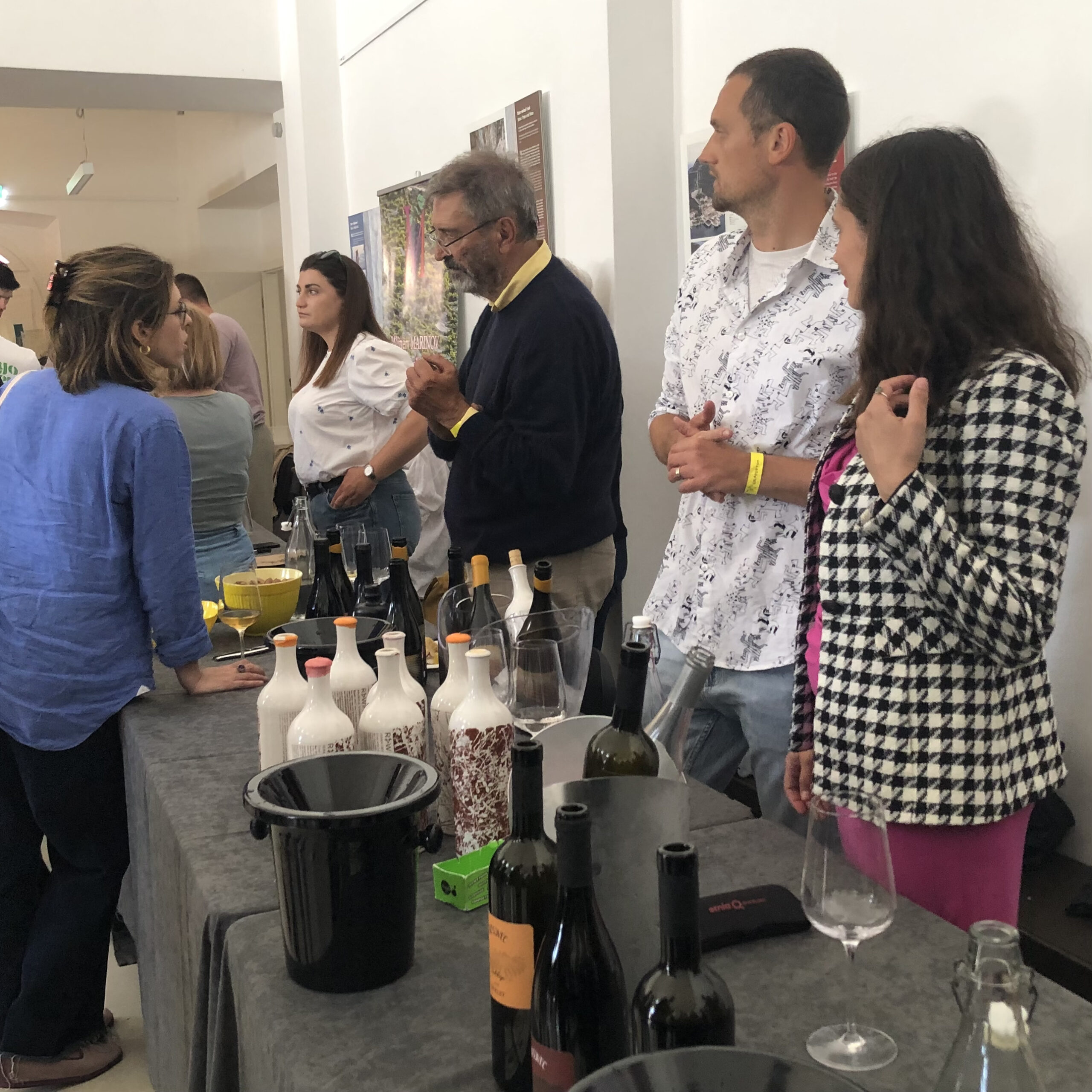
All the wine makers in the room at GrapeSton have taken on risks in common. One comment from Glavica really sends home the realities of the natural method. “Some years when the grapes are not 100 percent healthy because of hailstorms or something, we need to manually pick only the good berries to put in the amphora.”
Picking through individual berries adds a huge labor component in those years. But when you can’t “correct” in winemaking, you can only correct in picking.
Natural wine shows much more vintage variation, and if it’s made without added sulfites, bottle variation, than conventional wine. This is celebrated as the genuine-ness of “living wine.” But it also explains some of the more radical flavors in natural wine. It is easy to overlook sediment in the bottle or less-than-clear wines. These traits are part of the physical process of natural wine. The biological process can go awry, though, resulting in sometimes screeching acetic or volatile acidity, and peanutty, musty, pickle juice or smoky flavors. Drinkers choose their level of tolerance for these. If anything goes very wrong, “it is the end of the story” for that wine that year, warns Ivo Matošin. Although many rosé wines, vermouths and other spirits (including the gin made by Križ) are the fortuitous outcomes of winemaking disasters.
Accepting the pitfalls of the process is part of the natural mindset, as both consumer and producer. “I’m learning 20 years and I still realize so many times I don’t know much! Because it’s too powerful and too different,” says Bogoević Marušić.
GrapeSton is where I first taste Ghira’s two fantastic macerated Malvazijas, made in amphoras. Macerated white wines are a hallmark of natural winemaking. Whether made in amphoras or in vats, most natural white wines are macerated and fermented with the skins, the way white wines were made 100 years ago, rather than pressed and fermented juice-only, the way conventional white wine is made. Pigments in the skins give these wines an amber color. Called macerated whites, amber wines or orange wines, they are becoming wildly popular, and may be natural wine’s crossover hit among conventional wine drinkers—but note that not all macerated whites are made naturally. (For more on macerated/amber/orange wines, read this.)

Finding the Way to Natural
Marko Pavlak owns the wine bar Peškafondo in Primošten, whose old town sits on an almost-island barely connected to the coast of northern Dalmatia. We are sitting in a local restaurant with a bottle of Morlak Pošip, which Pavlak makes with Ivan Dragičević of Divina Vina, a winery in Split. Pavlak explains that they source the grapes in Korčula, then ferment them in 500-liter barrels with about 20 days of skin contact, with no added sulfites in the vineyard or winery, and no malolactic fermentation. The wine is amber in color, with light floral and apricot aromas and a slightly resiny orange and wildflower flavor. It is quite tannic and tastes like no typical Pošip.
Suddenly a wormhole opens in my universe. Does Pošip actually taste like this wine, and what I’ve been taught for years was correct is only a PG version of the grape?
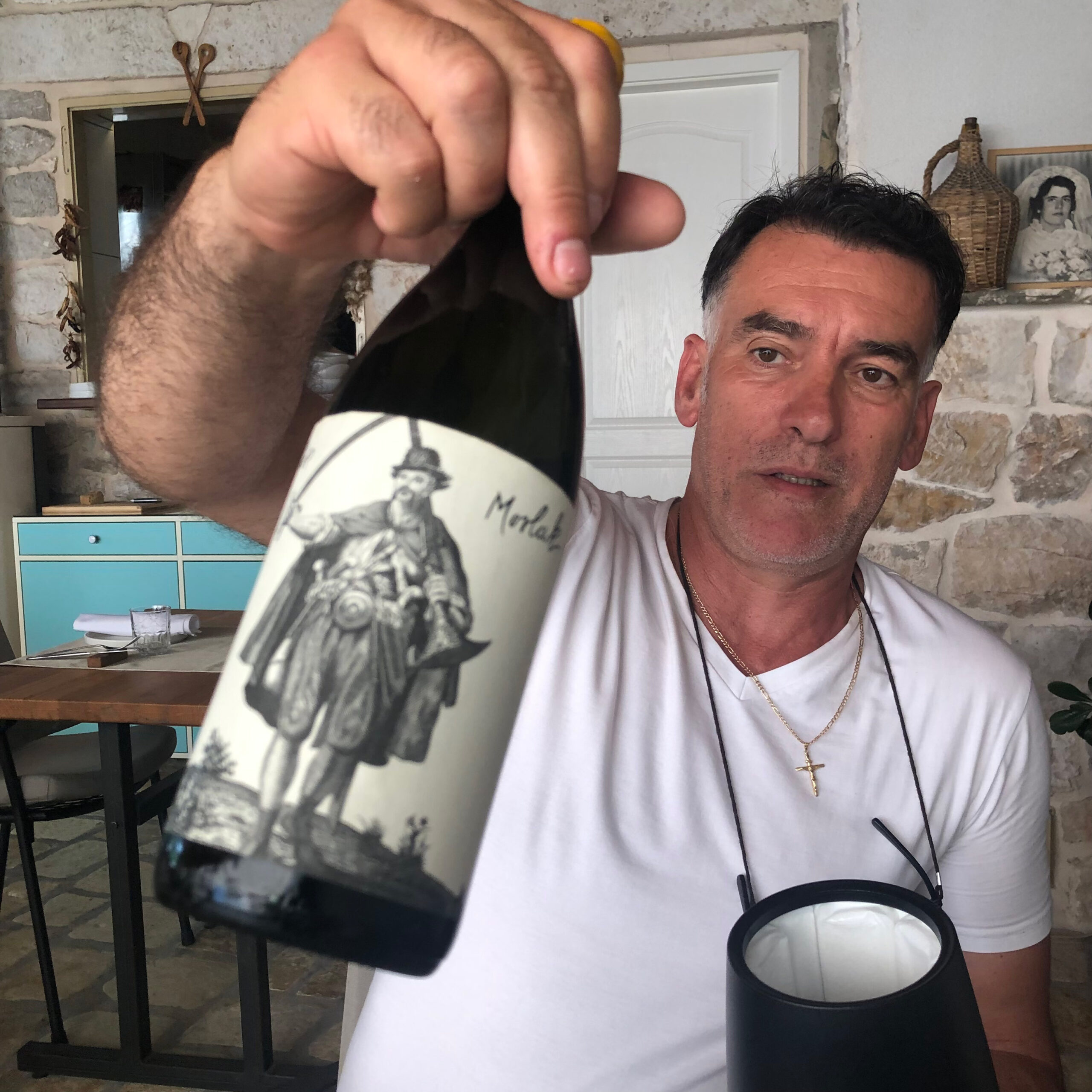
Talking with Pavlak feels a lot like being converted. His recommendations veer into farm wine and back, and he has rooted out tiny producers whom I suspect bottle their wines just for him. His wine list features both conventional and natural wines from a handful of countries, and the definition of natural wines at the top of the list reads like a challenge: “For us, they represent a sincere winemaking in which the winemaker, with a minimum of intervention and with a maximum of his own personality, creates a wine that leaves no one indifferent.”
His definition may cover a lot of winemaking sins, but Pavlak is fine with some of the less comfortable textures and flavors in natural wine, and is characteristically irreverent in his approach to enjoying them, leaving open bottles on the counter for a week as he samples them. “Full oxidation, complete contact with the air,” he says, often rounds out the edges. “The most important thing is the energy that is in the wines.”
Whether or not drinkers can detect energy, many natural wines seem to require a sense of gustatory adventure. Boris Sarjanović, at Nesputana Vina, also talks about the energy and expression of these wines. But when I stopped in last spring, he explained his entirely practical approach to selling them. “In the end it’s pretty much personal. We try to explain to people here that there is a big difference between conventional and natural wine in terms of intensity of flavors and aromas and the expression of the wine—minerality, very often acidity that can be quite sharp . . .” His advice for his customers would serve anyone who wants to try natural wine. “Try to forget about everything you know [about wine]. Just relax and see, is it comfortable for you?”
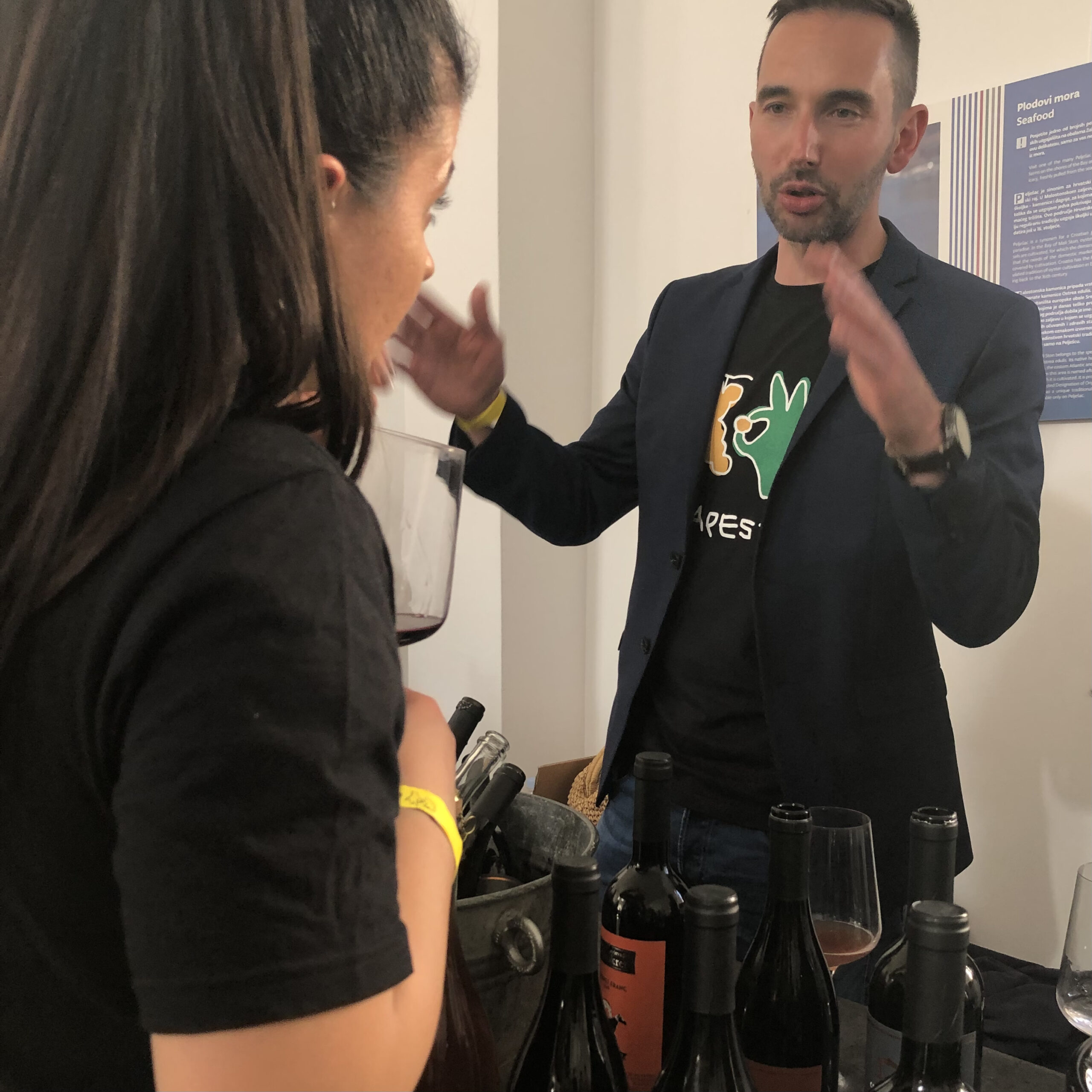
Like Pavlak, Sarjanović and many other converts to natural wine, Damir Mihelić has traveled widely to experience the variety of methods and flavors of natural wine. He recommends this approach to beginners and the curious. “It’s the best way to understand—visit a wine producer or a specialty wine store. I visited between 50 and 100 wineries around Europe with this philosophy over the past 10 years,” he said. Conversely, Mihelić says that because most natural wineries are small, “our best marketing is to speak directly with the person who is going to open this bottle.”
Again and again I heard that natural wine is personal. Maybe this is what is important about natural wine, whether or not it suits everyone, whether it succeeds or fades. It’s a personal connection with wine maker, land and wine, the way wine once was. When tiny wineries can produce one barrel or a few of a wine that makes them happy, and share that with people, it creates the kind of connection that conventional wine spends a lot of money trying to conjure. Natural wine drinkers seem less consumers than explorers looking for more options that are healthy for land and body, and real connections with what they drink, where it comes from and the individuals who make it. And isn’t this what most wine lovers want?
[Cover image: It’s a chill scene at the first GrapeSton Festival. Photo: Staff/CCM]

